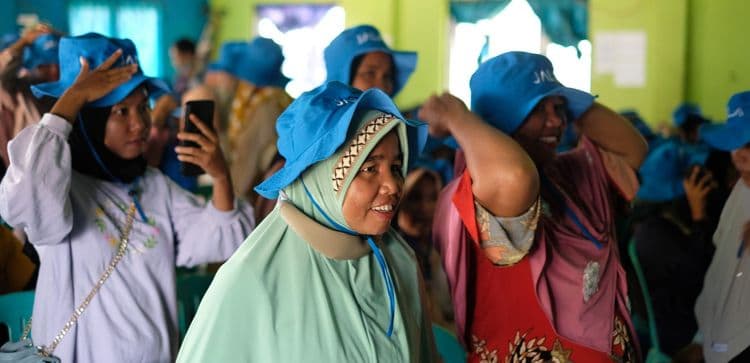
The similarity of occupations and experiences can unite a group of people, including shrimp farmers. Farmers can form a group to share their cultivation experiences. This is actually important given that farmers mostly have similar experiences in cultivating, particularly in the prevention and treatment of disease.
Forming a farmer group
Actually, there are no special requirements to form a group of farmers, it is simply based on the same interest. However, if the group has the potential to grow to be a large-scale group, it could be because of the area covered, there are a number of requirements that need to be met.
In certain areas, there are certain requirements that must be met to form a farming group. For example, as implemented by Pokdakan (Fish Farming Group) in Kulon Progo, Special Region of Yogyakarta. Before establishing a Pokdakan in Kulon Progo, some requirements must be met, such as having a minimum of 10 to 25 members, sharing the same interest, agreeing on regulations, implementing an organized administrative system, etc.
Once all the requirements have been met, the Pokdakan can begin the next step, such as holding a meeting and launching the group. Then, group programs can be started, for example regular discussions about cultivation and collective implementation of biosecurity.
The function of farmer groups in biosecurity implementation
Biosecurity is an attempt to prevent disease-causing organisms from entering the farm environment. This measure is taken to avoid a decline in cultivation productivity due to disease or pest attacks. Biosecurity is implemented at every stage of cultivation, from preparation to harvesting.
Biosecurity implementation requires a lot of time, effort, and costs. Financial aspects usually hinder some farmers from implementing biosecurity in their farms. This obstacle can be mitigated by having a farmer group. If a farmer group is formed in a certain area, the members can work on implementing biosecurity collectively.
In the dynamics of a farmer group, farmers can support and share with each other to maintain the sustainability of their cultivation. For example, farmers can inform other farmers in the surrounding area when a disease outbreak affects the farm. This allows farmers in that area to take anticipatory measures and prevent the disease from spreading further.
In addition, the farmer group’s members can share supporting infrastructure for farms. Farmers can install a tool that will benefit everyone in the group.
Mutual guarding between farms and members of the farmer group is one of the biosecurity measures. Many farmers will eventually reap the benefits of implementing biosecurity, such as decreased losses and improved shrimp quality.
Read more: “Shrimp Farmers Coffee Time” Gathering Event





